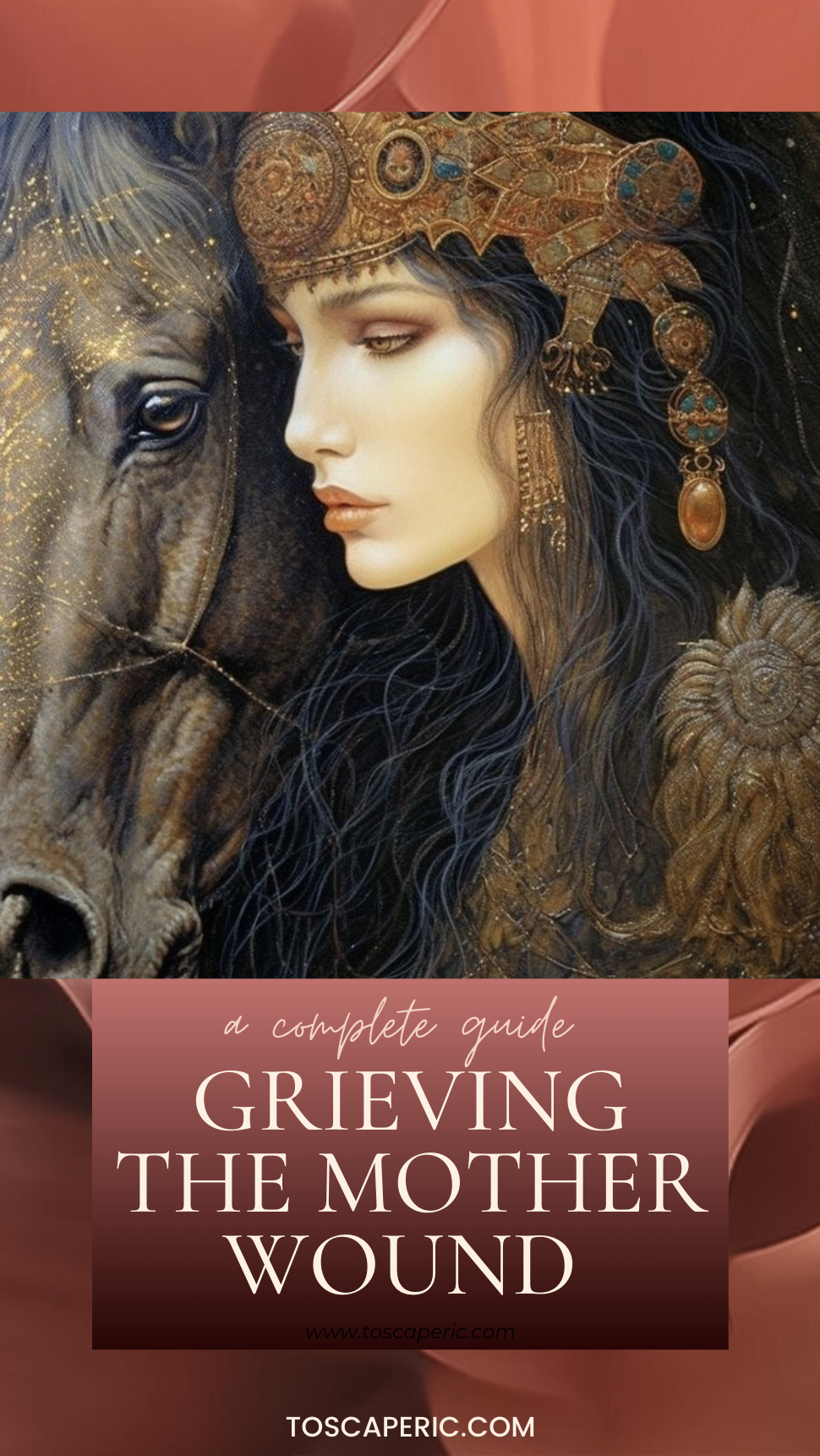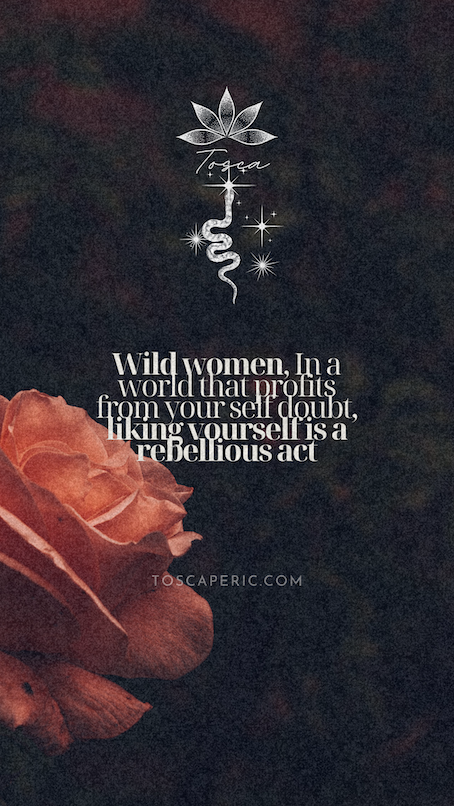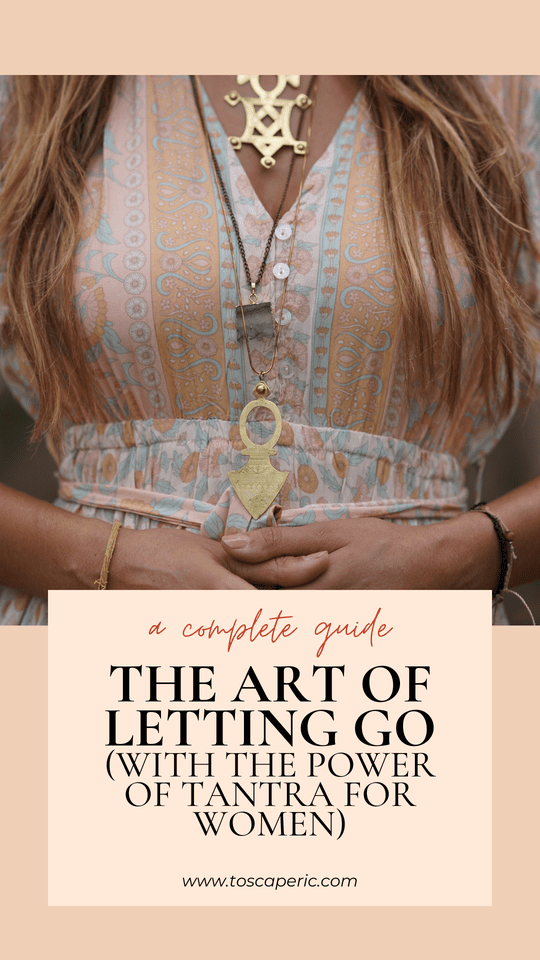I am Tosca
Welcome Goddess!
Grieving the Mother Wound
Grieving the mother wound is a profound, transformative process. It involves mourning the loss of the relationship you may have wished for, the unmet needs from childhood, and the emotional scars left by a difficult maternal connection. This grief is complex because it often combines love, anger, sadness, and longing, leaving a tangled web of emotions to process. Below is a compassionate guide to navigating this unique kind of grief.
1. Acknowledge the Depth of the Grief
The grief tied to the mother wound is multilayered. It’s not just about the loss of a person or connection; it’s also the loss of a dream or ideal. You may grieve:
The mother you needed but didn’t have.
The unconditional love and safety you didn’t feel.
The missed opportunities for emotional connection and support.
Join The Letting Go Club
12 Month Journey of Feminine Embodiment, Self-love, Sisterhood, Letting Go & Musings

Reclaim your energy. Reclaim your power. Embrace your feminine flow. Sign up here.
It’s important to validate your pain. Society often idealizes motherhood, which can make grieving these wounds feel isolating. Know that your feelings are valid and deserving of space, no matter how complicated they seem.
2. Allow Yourself to Feel Everything
Grieving the mother wound can bring up a wide range of emotions: anger, sadness, resentment, guilt, or even relief. It’s okay to feel all of these things, sometimes all at once.
- Anger: You may feel angry for the hurt caused, and that’s natural. Allow yourself to express it in healthy ways—write, scream into a pillow, or channel it into movement.
- Sadness: Mourning the mother you wished for is deeply sad. Let yourself cry and honor the feelings of loss.
- Guilt: It’s common to feel guilt for grieving a relationship that might still exist. Remind yourself that grief doesn’t mean ingratitude or disloyalty; it’s a natural response to unmet needs.
Give yourself permission to feel these emotions fully without judgment. Healing requires allowing space for all your feelings to surface.
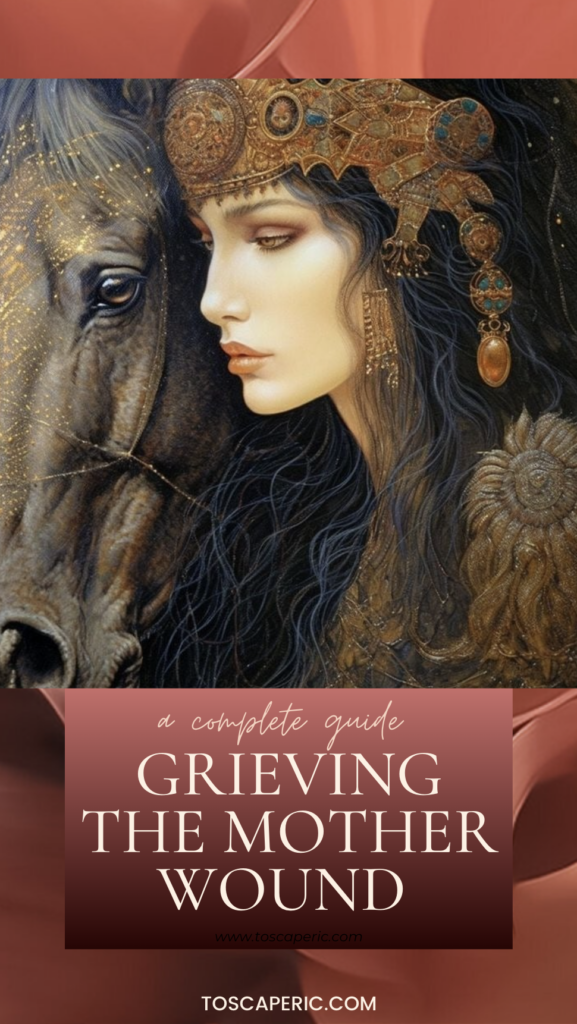

3. Understand Grief Comes in Waves
Grieving the mother wound is not a linear process. You may feel fine one day and overwhelmed the next. Milestones—birthdays, holidays, or life events—can trigger the pain of what was missing. These waves are part of the process, not a sign that you’re moving backward. Be patient and kind to yourself as you navigate these ups and downs.
Join The Letting Go Club
12 Month Journey of Feminine Embodiment, Self-love, Sisterhood, Letting Go & Musings

Reclaim your energy. Reclaim your power. Embrace your feminine flow. Sign up here.
4. Separate the Relationship from Your Worth
One of the deepest aspects of the mother wound is the tendency to tie your self-worth to your mother’s actions or words. If your mother was critical, neglectful, or unavailable, you might feel unworthy of love or care. Part of grieving involves letting go of this false belief.
Remind yourself that your mother’s behavior was a reflection of her limitations, not your value.
Affirm your worthiness of love, care, and respect.
Work on replacing self-critical thoughts with compassionate ones.
5. Release the Idealized Version of Your Mother
A key part of grieving is letting go of the “ideal mother” you hoped for. This doesn’t mean erasing your love or respect for her, but it does mean accepting her humanity and limitations.
- Reflect on who your mother is versus who you wanted her to be.
- Grieve the gap between those two versions.
- Release the expectation that she might change if doing so only perpetuates your pain.
Acceptance doesn’t mean approval or agreement; it means freeing yourself from the weight of unmet expectations.
6. Honor Your Inner Child
The mother wound often leaves a deep imprint on your inner child—the younger version of yourself who felt neglected, unseen, or unloved. Grieving the mother wound involves reconnecting with and nurturing that inner child.
- Acknowledge your inner child’s pain: Write a letter to your younger self, validating their emotions and experiences.
- Offer comfort: Imagine holding your inner child, reassuring them that they are safe and loved.
- Meet unmet needs: Identify what you needed as a child—affirmation, safety, affection—and give that to yourself now.
By honoring your inner child, you reclaim the power to provide the love and care you’ve always deserved.
7. Create Space for New Supportive Relationships
Part of grieving the mother wound is realizing that you may need to seek the nurturing and support you didn’t receive elsewhere. Surround yourself with people who offer empathy, encouragement, and love.
- Build connections with friends, mentors, or chosen family who affirm your worth.
- Seek guidance from a therapist or support group to navigate your feelings.
- Recognize that while your mother’s role may be irreplaceable, other relationships can fill some of the emotional gaps left behind.

If you’re enjoying this, subscribe to my self-love letters for free.
8. Use Rituals to Symbolize Letting Go
Symbolic rituals can help you process grief and create closure.
- Write a letter: Express everything you feel toward your mother—whether anger, love, or sadness—then destroy or release it as a symbolic act.
- Create a memory box: Include objects or letters that represent the relationship you are mourning, and place it somewhere safe as a way to honor the past while moving forward.
- Light a candle: Dedicate time to reflect on your grief and set an intention for healing.
These rituals can provide a sense of control and peace in an otherwise overwhelming process.
9. Celebrate Your Strength
Grieving the mother wound is not just about processing loss; it’s also about recognizing your resilience. Despite the challenges, you have survived, grown, and continued to seek healing. Celebrate the courage it takes to confront this pain and the strength you show in building a life of love and connection.
10. Give Yourself Permission to Move Forward
Grieving doesn’t mean staying in pain forever. As you work through your emotions, give yourself permission to envision a future free from the weight of the mother wound. This doesn’t mean forgetting your past or pretending it didn’t happen—it means allowing healing to create space for joy, self-love, and new possibilities.
Affirmations for Grieving the Mother Wound
- “I honor my grief and give myself time to heal.”
- “It is okay to grieve what I didn’t receive.”
- “My pain is valid, and so is my growth.”
- “I release the weight of the past and embrace my future.”
- “I am worthy of love, safety, and peace.”
Grieving the mother wound is a courageous act of self-love. It’s a process of acknowledging pain, releasing expectations, and creating space for healing. As you grieve, remember that you are not alone, and there is strength in choosing to face and transform your wounds. You deserve the peace and freedom that healing brings. ❤️
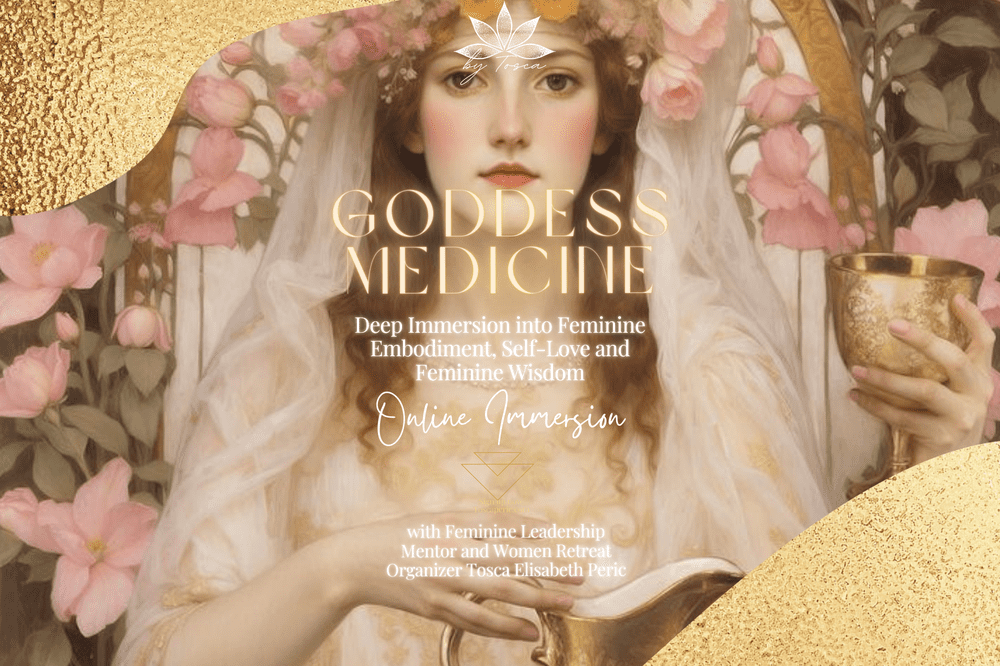
Family dynamics often shape two types of children: those who unconsciously repeat the cycles of pain, dysfunction, and unresolved trauma, and those who courageously choose to break free and heal.
Repeating the cycle often stems from a lack of awareness or the belief that things cannot change, while breaking free from generational trauma and the cycle requires bravery, introspection, and intentional effort. You have the power to decide which path you’ll take.
Do you want to address your mother wound, transform your pain into empowerment, and step into your most authentic self? Join my course or sign up for Goddess Medicine today and start your journey toward healing and freedom. Your future self is waiting.
Keep reading about the Mother Wound:
How The Mother Wounds Affect Us
Finding Forgiveness for the Mother Wound
